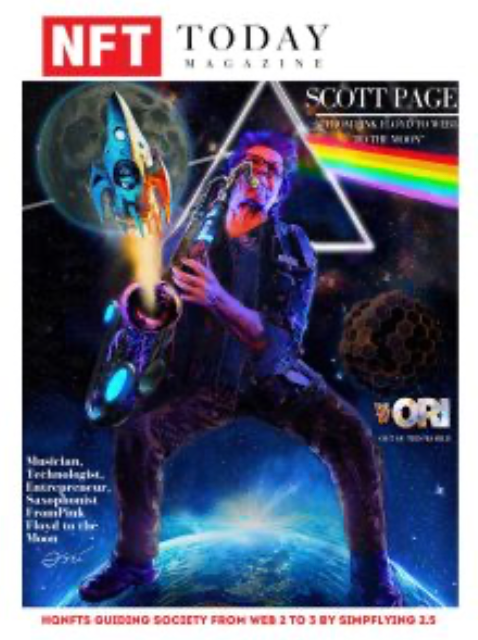Tezos Gaming’s Next Move: Efe Kücük On AI, Web3 Adoption, And Building Fast
Staff Writer • 2025-02-18
The gaming industry is at a crossroads. Traditional game development cycles are long and costly, mainstream adoption of Web3 gaming remains elusive, and artificial intelligence is rewriting the rules of digital creativity. At the center of these seismic shifts is Efe Kücük, the new Head of Gaming at Trilitech (Tezos R&D Hub in London), who believes speed and adaptability will be the key to success. Kücük isn’t a newcomer to the Tezos ecosystem. Having spent nearly two years working on gaming products, he now finds himself in a position to shape the blockchain’s gaming future. His mission is clear: increase adoption, empower studios, and build faster than ever before. From Developer to Decision-Maker Kücük’s transition to Head of Gaming is a natural evolution. His background spans both game development and tooling for developers, giving him a unique perspective on the challenges and opportunities within Web3 gaming. Unlike an outsider stepping into a new world, Kücük has been immersed in the Tezos ecosystem, working on its gaming infrastructure from the inside out. With this experience, he brings a clear understanding of what works and what doesn’t. His strategy isn’t about forcing studios to conform to a predefined mold. Instead, it’s about identifying their strengths and aligning them with Tezos’ technology. “The goal is to find top talent and point them in the right direction,” Kücük explains. “It’s not about telling them what to build, but rather understanding their passions and seeing how they can meaningfully integrate Tezos’ tech.” The Shifting Focus of Web3 Gaming Web3 gaming has long aimed for mass adoption, but Kücük sees a flaw in that approach. Instead of chasing the elusive mainstream gamer, he believes it’s time to focus on the existing crypto-native audience first. “I don’t see anything wrong with aiming for mass adoption, but if you want to grow quickly, targeting crypto-native users first makes more sense,” he says. “That’s where today’s value is. That’s where the volume is.” By shifting priorities, Kücük aims to bring more immediate traction to the Tezos gaming ecosystem. Projects that can execute quickly and engage existing blockchain users will lay the groundwork for wider adoption in the future. AI-Powered Game Development and the Need for Speed Speed is the name of the game in Kücük’s strategy. He firmly believes that the ability to move fast is what separates successful gaming projects from those that stagnate. A big part of this acceleration comes from AI. “AI is changing everything,” Kücük states. “It provides a boilerplate to start projects faster. Even if you don’t know how to code, AI can help you get to an amazing stage. And if you do know how to code, it can 10x your development speed.” This shift in development workflow means that the barrier to entry is lower than ever. Tools like Bolt.New are allowing developers to rapidly prototype and ship products in record time. When Kücük ran his own game studio, his team could produce multiple prototypes in a single week. Now, with AI, that cycle is even shorter. “If you’re still thinking about something and not doing it, by the time you’re ready, someone else has already done it,” he says. The Economics of Game Development One of the biggest misconceptions about game development is cost. Many assume it’s a simple process, but in reality, building a game can be prohibitively expensive. “For a simple mobile game, you might get away with $10,000 to $20,000 for a prototype,” Kücük explains. “But for a full-scale game, you’re talking millions.” This reality makes AI-driven efficiency even more critical. It allows studios to iterate faster, reduce overhead, and test concepts before committing to large-scale production. Steering Game Studios in the Right Direction A major part of Kücük’s role is guiding game studios in the Tezos ecosystem. It’s a delicate balance—creators are deeply attached to their projects, and feedback isn’t always easy to hear. However, his experience running a game incubator has given him the skills to provide constructive guidance. “If I see that a studio is too in love with its product to take feedback, I tell them directly,” he says. “Of course, in a professional way, but the reality is that not every idea works.” His approach is twofold: first, product feedback based on successful models, and second, a focus on go-to-market strategy. Many Web3 gaming studios, he notes, fail to think about user acquisition from day one. “They need to consider things like target CPI, conversion rates, and whether they should be focusing on Web3-native users or a broader audience,” he says. “These aren’t afterthoughts; they should be built into the strategy from the beginning.” The Future of Tezos Gaming Tezos has long been a blockchain of choice for developers looking for energy efficiency, scalability, and self-upgradable smart contracts. Under Kücük’s leadership, its gaming ecosystem is poised to evolve rapidly. With AI-driven development, a sharper focus on existing blockchain users, and an emphasis on rapid iteration, Tezos is setting itself apart in the competitive world of Web3 gaming. Kücük’s mission is clear: build fast, ship faster, and make Tezos the go-to blockchain for gaming innovation. For studios looking to connect, Kücük is open to discussions. “Just reach out on Twitter,” he says. “My DMs are open for literally anyone.” In a space that moves at lightning speed, those who hesitate risk getting left behind. Under Kücük’s leadership, Tezos Gaming isn’t waiting—it’s building.
See More Posts
A look at how NFTS, Web 3, Gaming, Cryptocurrencies and Blockchain are reshaping businesses across the globe.
@NFT Today Magazine


